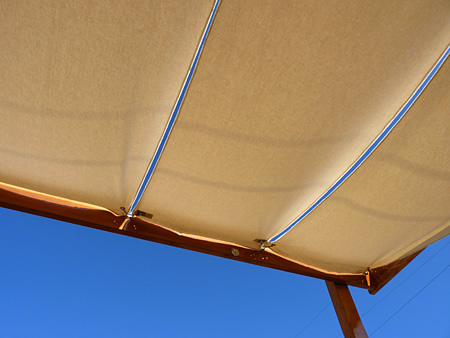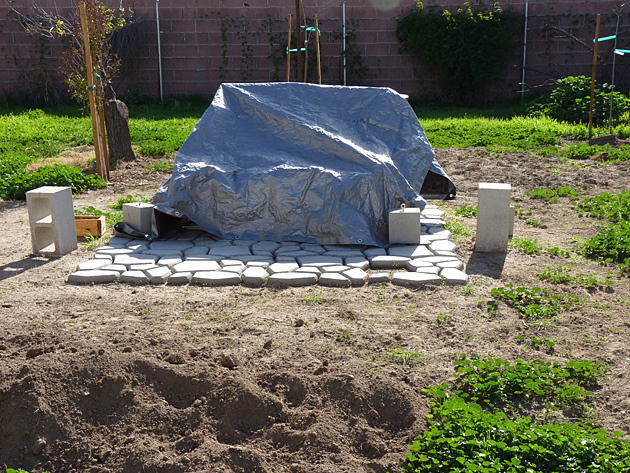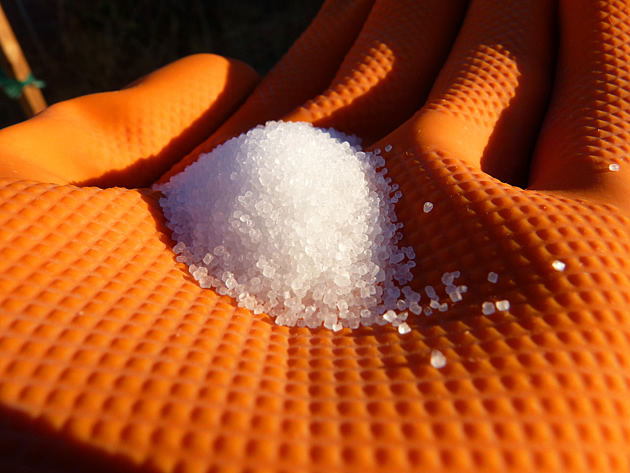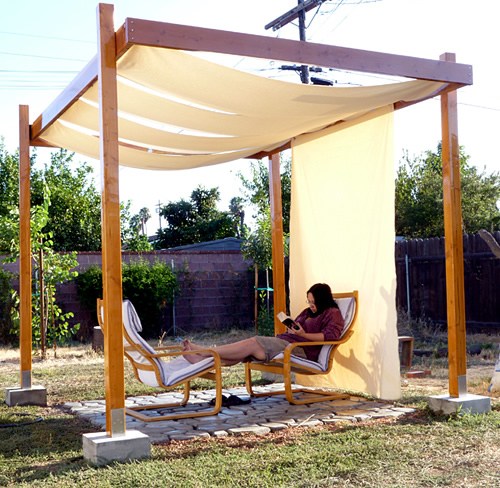Project OMC
Status: In Progress
This project is my attempt at making my own version of a pergola that is adjustable to various needs with zero maintenance. The original plan involved a non-removable top made out of canvas and held down with stainless steel hardware. I also wanted it to be very sturdy with little or no wobble in the posts. Everything that Home Depot and Lowe's had was either too ugly or just not sturdy enough. My only choice was to make something from scratch.
The total cost for this project was very low at under $250. I can't provide an exact figure because I bought more screws than I actually needed to build it. Buying them in bulk was cheaper and I now have extra screws for future projects. I also have some Spar Varnish and UV/sealer left over for future use.


























